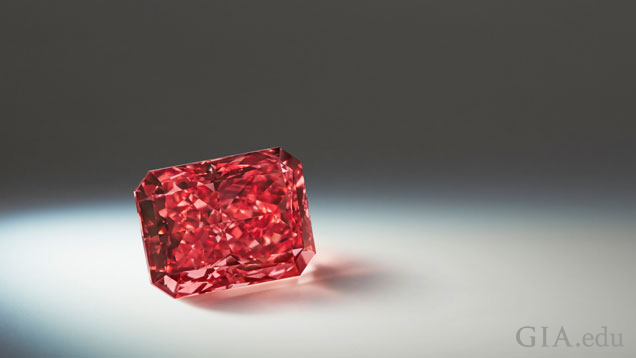Is the Swan Song for Argyle Pink Diamonds Close at Hand?
March 15, 2018

The flow of those distinctive Argyle fancy pink diamonds may end in 2020 if prices of the more commercial stones the mine produces do not improve.
Argyle mined 17.1 million carats of diamonds last year, a 23% increase over 2016. The vast majority of its production comprises lower quality diamonds under 0.15 carats that are used in promotional jewelry – those $299 diamond studded bracelets and pendants, for example. Prices for these have declined slightly in the five years since the mining company completed its estimated $1 billion underground redevelopment.
In planning the redevelopment, the company had targeted 2020 as its closing date. However, in its original plan, Argyle had been scheduled to close in 2002 but rising diamond prices allowed Rio Tinto, its owner, to keep the mine open and, ultimately, redevelop it into an underground operation.
Closing the mine could cause economic difficulty in several cities in India that specialize in cutting Argyle goods and possibly create shortages in the very low end goods that sustain the commercial jewelry market, especially in the U.S.
The mine, however, is famous for the 100 carats or so of the fancy pink, red and other strongly colored diamonds it offers each year. Argyle selects the best of these colored diamonds for its highly publicized tender auctions. While the company does not reveal prices, they often fetch well in excess of $1 million per carat.
Last year’s October tender included some of the most spectacular fancy colored diamonds the company has offered since its first sale in 1984: a 2.11 ct Fancy red, which it named the Argyle Everglow; a 1.14 ct Fancy red; a 2.42 ct Fancy purple-pink; a 1.50 ct Fancy deep pink; and a 0.91 ct Fancy deep gray-violet. All were graded by GIA.
De Beers’ second cycle (Feb. 29-March 1) sales of $555 million reflects the company’s optimistic statements about the market. The total, which includes sight sales and individual sales to clients, is 17% below January’s total – traditionally the year’s largest – and slightly above its February 2017 sales totals. The company held the line on prices.
De Beers reported that the two largest consumer markets, the U.S. and China, both appeared strong.
Alrosa, the world’s largest producer by volume, nearly equaled De Beers’ rough sales in February with an allocation of $533 million, equaling its January sale.
Demand at the recent Hong Kong International Diamond, Gem & Pearl Show was slightly below expectations, because traffic was down from last year, even after a successful New Year’s selling season.
Despite the obvious pick-up in consumer demand, banks will certainly continue their tight rein on industry financing in the wake of the nearly $2 billion alleged fraud by Indian retailer Nirav Modi and a related diamond manufacturing and retailing company, Gitanjali. Some of Modi and Gitanjali’s issues stem from alleged defrauding of banks and Indian consumers, as well an ongoing investigation that has made international headlines. In addition, the companies are accused of involvement in “roundtripping” practices – exporting and importing the same parcels of diamonds to inflate a company’s balance sheet to obtain additional bank credit and better credit terms.
Gitanjali and Nirav Modi deny the accusations and neither company has filed for bankruptcy. Three U.S. affiliates, bridal jewelry manufacturer A. Jaffe, and jewelry manufacturers Firestar Diamond Inc. and Fantasy Inc., have filed Chapter 11 proceedings, but all expect to remain in business.
The banks are already further tightening credit, according to Indian gem dealers. Bidding at the Feb. 26 Gemfields auction of commercial and low-quality emeralds in Jaipur had fewer bidders because the investigations reduced their credit availability, the company said. Gemfields sold $10.8 million worth of emerald rough for an average of $3.08 per carat. The company said the results were satisfactory, despite the diminished bidder base.
Russell Shor is senior industry analyst at GIA in Carlsbad.
.jpg)


